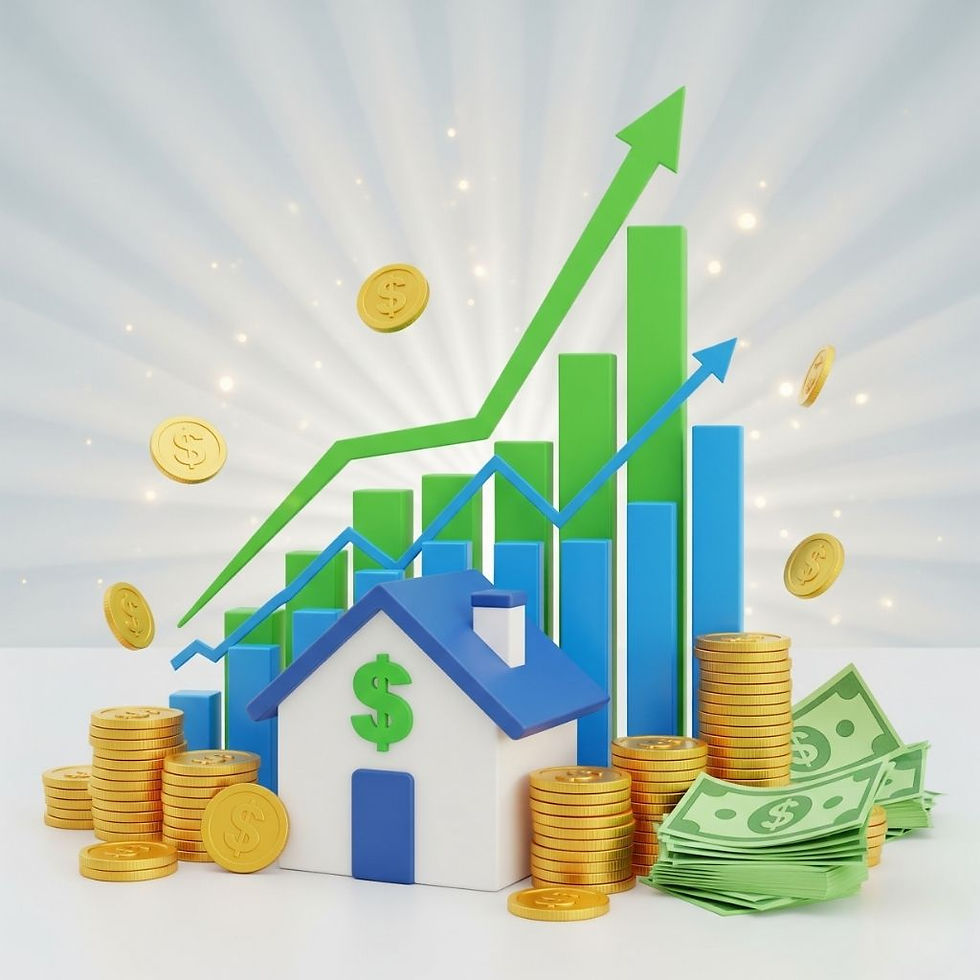Everything You Need to Know About Energy-Efficient Homes: Save Money, Protect the Future
- Tuna TAS

- Apr 14
- 3 min read
With increasing energy costs and rising environmental awareness, energy-efficient homes are gaining more and more importance today. An energy-efficient home not only contributes to your budget by consuming less energy but also helps protect natural resources. So, how are energy-efficient homes designed, what technologies are used, and what can you do to make your home more energy-efficient? In this article, we will discuss everything you need to know about energy-efficient homes in detail.

What is an Energy-Efficient Home?
An energy-efficient home is a structure designed and built to minimize heating, cooling, lighting, and other energy consumption. In such homes, technologies such as insulation materials, energy-efficient appliances, renewable energy sources, and smart home systems are used to optimize energy consumption.
Key Elements of Energy-Efficient Homes:
High-Quality Thermal Insulation: High-quality thermal insulation materials used in walls, roofs, floors, and windows significantly reduce heat loss and gain. This results in less need for heating in winter and less need for cooling in summer.
Energy-Efficient Windows and Doors: Insulated windows with low-emissivity (low-e) glass and well-insulated doors minimize heat transfer.
Energy-Efficient Heating and Cooling Systems: High-efficiency boilers, heat pumps, and air conditioning systems provide more heating or cooling with less energy.
Energy-Efficient Lighting: Energy-efficient lighting products such as LED lamps consume much less energy than traditional lamps and have a longer lifespan.
Energy-Efficient White Goods: White goods with an A+++ energy rating, such as refrigerators, washing machines, and dishwashers, significantly reduce energy consumption.
Renewable Energy Sources: By using renewable energy sources such as solar panels, you can meet some or all of your home's energy needs in an environmentally friendly way.
Smart Home Systems: Technologies such as smart thermostats, lighting control systems, and energy management systems help you optimize energy consumption.
Water Conservation: By using water-saving fixtures and systems, you can reduce water consumption and thus the energy spent on water heating.
Advantages of Energy-Efficient Homes:
Lower Energy Bills: The most obvious advantage is the significant reduction in heating, cooling, and electricity bills due to lower energy consumption.
Environmental Friendliness: By consuming less energy, you reduce your carbon footprint and contribute to the protection of natural resources.
More Comfortable Living Spaces: Well-insulated homes with balanced temperatures offer more comfortable and healthier living spaces.
Increased Home Value: Homes with energy-efficient features are considered more valuable in the market.
Government Incentives: Many countries offer tax breaks and support to encourage energy-efficient homes.
How to Make Your Home More Energy-Efficient:
Even if you are not building a new home, there are many things you can do to make your existing home more energy-efficient:
Improve Thermal Insulation: Insulate your walls, roof, and floor.
Check Your Windows and Doors: Use double-glazed or insulated windows and well-insulated doors.
Use Energy-Efficient Light Bulbs: Replace traditional light bulbs with LED lamps.
Choose High Energy-Rated White Goods: Pay attention to energy labels when buying new appliances.
Don't Leave Your Devices on Standby: Unplug electronic devices when not in use or use energy-saving sockets.
Make Your Thermostat Smart: Optimize your heating and cooling settings with programmable or smart thermostats.
Consider Solar Energy Systems: Install solar panels on your roof to generate your own electricity.
Take Water Conservation Measures: Use water-saving showerheads and faucets.
Energy-efficient homes are an important investment for both individual budgets and the future of our planet. With the right design, material selection, and technology use, you can significantly reduce energy consumption and enjoy a more comfortable and sustainable life.




Comments